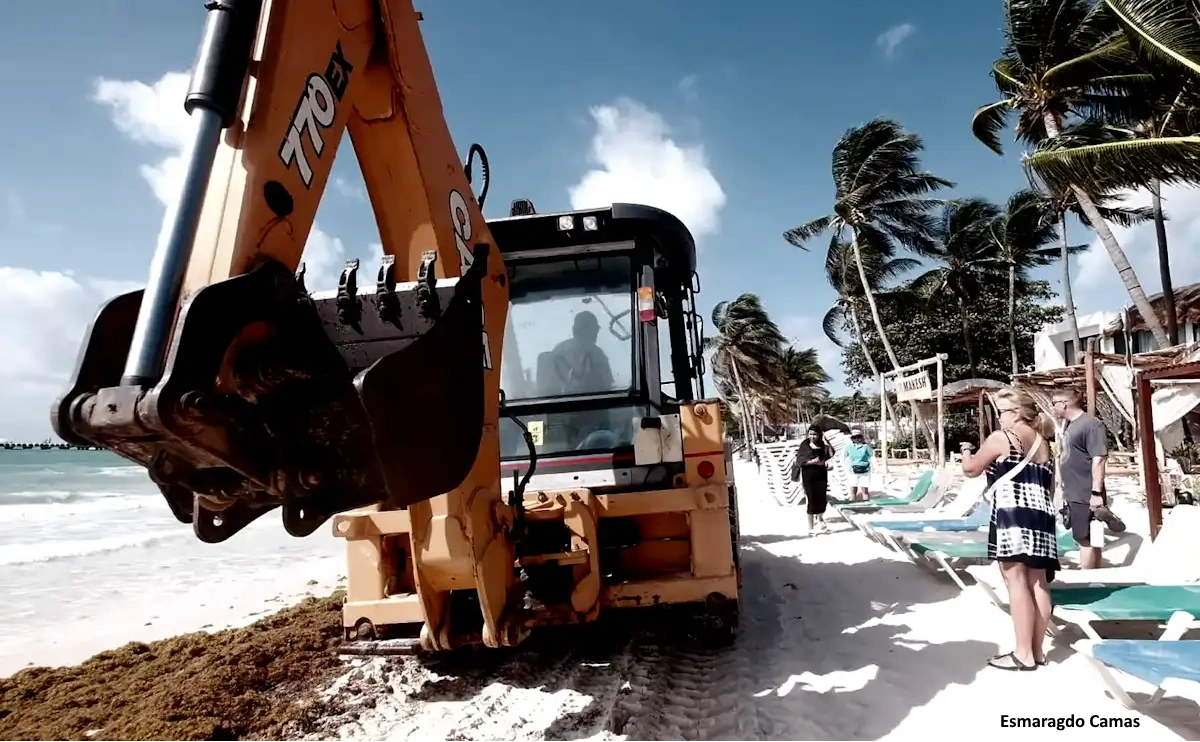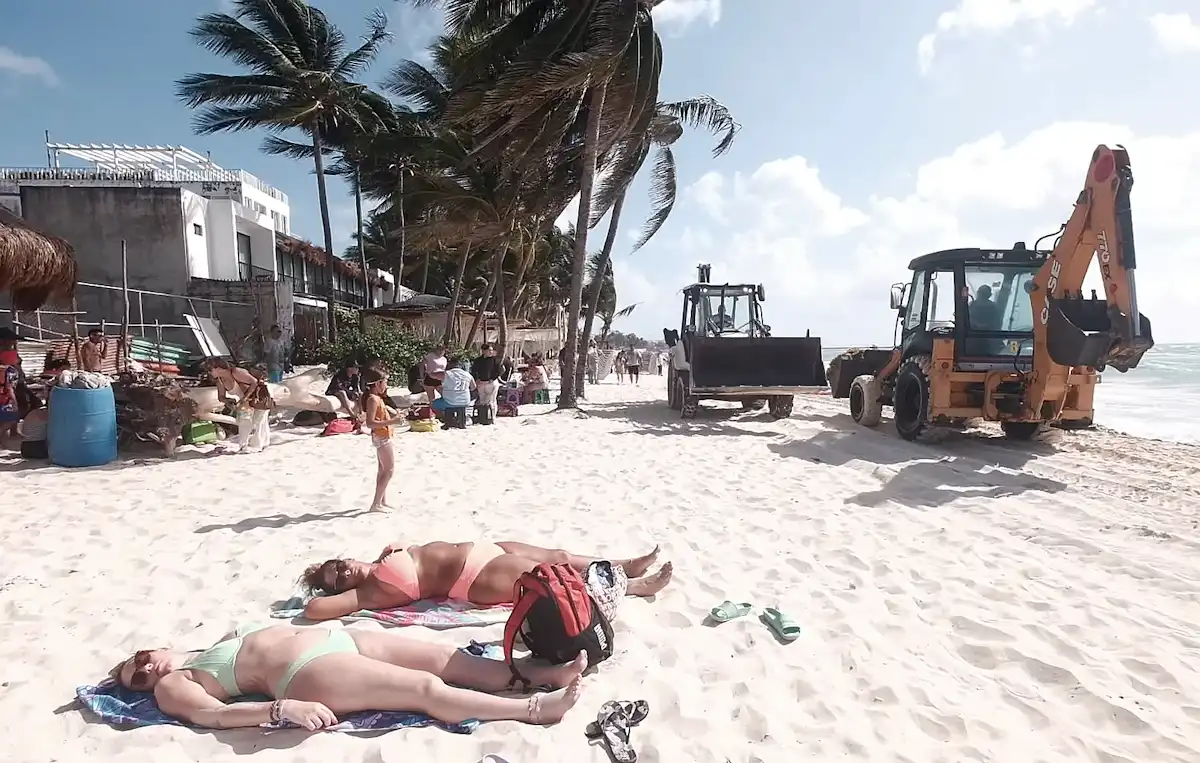When the Solution Becomes a Danger: The Risks of Mechanical Sargassum Removal on Beaches.

In many tourist areas affected by massive sargassum landings, local authorities have chosen the most visible—and the fastest—solution: using heavy machinery to clear the beaches. Backhoes, bulldozers, and other mechanical shovels roam the sand daily, their buckets filled with brown algae, aiming to “make the beach clean.” But at what cost?
Heavy Machinery Among Vacationers: A Dangerous Absurdity
Esmaragdo Camaz
The footage we recently received is unambiguous: backhoes maneuver just a few meters from tourists lying on the sand. Children can be seen running carefree between the sea and their towels, unknowingly crossing the path of these massive machines. Parents, lounging in the sun, do not perceive the immediate danger. Yet the beach has turned into an open-air construction site, without any of the safety measures typically required for such zones.
- No safety perimeter.
- No clear signage.
- No or insufficient staff to secure the area.
- No awareness campaign for tourists.
These machines are designed to move tons of material, not to operate in public spaces filled with children, families, and elderly people. One second of distraction, one child running at the wrong time… and tragedy could strike.
This nightmare scenario is not just a theory. In a 2023 video collected by Sargassum Monitoring, a heavy machine is clearly seen moving forward on a beach, while two young children are sitting directly in front of it, digging a hole in the sand. The operator, perched high in the cabin, barely sees them. The scene is chilling: the children are absorbed in their game, and the machine keeps moving. That time, an accident was narrowly avoided. But the question is no longer if—it’s when a tragedy will occur.
webcam – Key Biscayne beach club
Coastal Erosion Worsened by Bad Practices

Esmaragdo Camaz
Beyond the immediate human danger, the ecological consequences are equally alarming. Multiple scientific studies—and field observations by Sargassum Monitoring—have shown that repeated passes by heavy machinery on sand significantly accelerate beach erosion. Tracks and wheels compact the sand, destroy natural root systems, weaken dunes, and destabilize sediment layers.
In some areas, beaches have retreated by several dozen meters in just a few years. This loss of space further reduces the area between the beachfront and the waterline, forcing machines to operate ever closer to bathers and beachgoers.
We’ve been sounding the alarm for years. Since 2018, Sargassum Monitoring has documented the destructive effects of heavy machinery on coastal areas, along with the risks to tourists. Nothing has changed.
“To solve one problem, we’re creating two others.”
– A conclusion increasingly shared by scientists, local organizations, and residents.
Do We Need a Law to Protect Tourists… and the Beaches?

Esmaragdo Camaz
The management of the sargassum crisis cannot be rushed. It must not sacrifice public safety or the sustainability of coastal ecosystems. Strict rules must urgently be established—and enforced:
- Legal regulation of heavy machinery on tourist beaches.
- Creation of marked and monitored safety corridors.
- Time restrictions to prevent operations during peak hours.
- Operator training and public awareness.
- Prioritization of manual or lightweight mechanized methods in areas where at-sea collection is not possible.
An Alert That Needs Wide Circulation
Sargassum Monitoring is calling on governments, municipalities, tourism professionals, and citizens: it’s time to rethink the emergency. Cleaning a beach should never expose a child to deadly risk or accelerate coastal collapse.
We urge everyone to share this alert, document dangerous practices, and demand respectful, safe methods.
Join our Facebook groups to follow updates, contribute to citizen vigilance, and support our work in the 43 affected countries.
